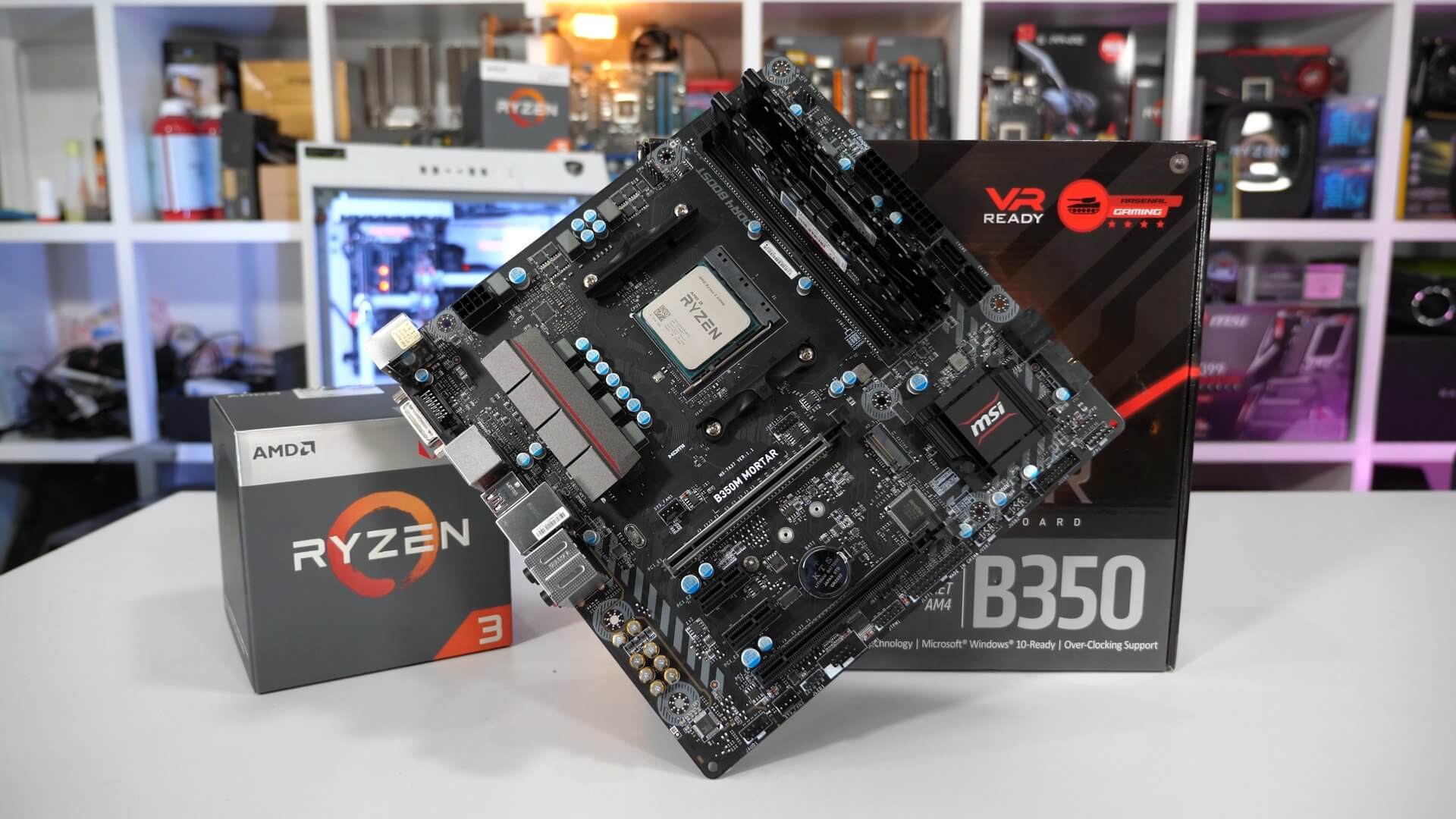Not that long ago we reviewed the $60 Athlon 200GE CPU and we've been wanting to come back to it for more, but it's been a hectic October with must-have coverage that included the RTX 2070, the Core i9-9900K and new Threadripper models. But it's finally time, so we've dug out the plucky little Zen based chip and for comparison grabbed the Ryzen 3 2200G and Intel's Pentium G5400.
We did not include the Core i3-8100 for two reasons: First, at the current $130 asking price it doesn't make sense as the Ryzen 3 2200G which was already our preferred choice is better value at $100. Intel's current budget lineup just isn't doing it for us and this was the case even before the 14nm shortage.
In the past we've preferred Intel's budget offerings to those from AMD. We loved the Pentium G4560 and couldn't stop talking about that thing. A few years earlier we were raving about the value of the Core i5-6600K, compared to the FX garbage AMD was peddling, the quad-core Skylake part was a bit of alright.

But in 2018 $64 dual-cores like the G4560 won't even get gamers out of bed anymore. Not when the 6-core/12-thread Ryzen 5 2600 can be had for $160 and even if you don't have that kind of money the quad-core Ryzen 3 2200G is also a bit special at $100 and certainly the go to option for budget builders. Thanks to its great value it often ranks in the top 5 best CPU seller list on Amazon.
Then for even less we have the Athlon 200GE, it's 40% cheaper at just $60 but I have to say it doesn't quite give us the fizz like the pure quad-core 2200G does. The 200GE is a dual-core with SMT, it's locked and comes with a piddly little cooler, but again it also costs just $60, almost half that of Intel's cheapest Pentium branded Coffee Lake CPU, the G5400 which currently sells for $110. For a direct cost comparison I'd need to get my hands on the Celeron G4920, a 3.2 GHz dual-core with 2MB of L3 cache and that part will almost certainly get slayed by the Athlon 200GE.
So what I want to know is, if you're on a super tight budget should you buy the Athlon 200GE? It's really the only sub $100 option right now and frankly while the Pentium G5400 is included for comparison's sake, the current asking price which sees it cost more than the Ryzen 3 2200G means it's essentially a dead product.
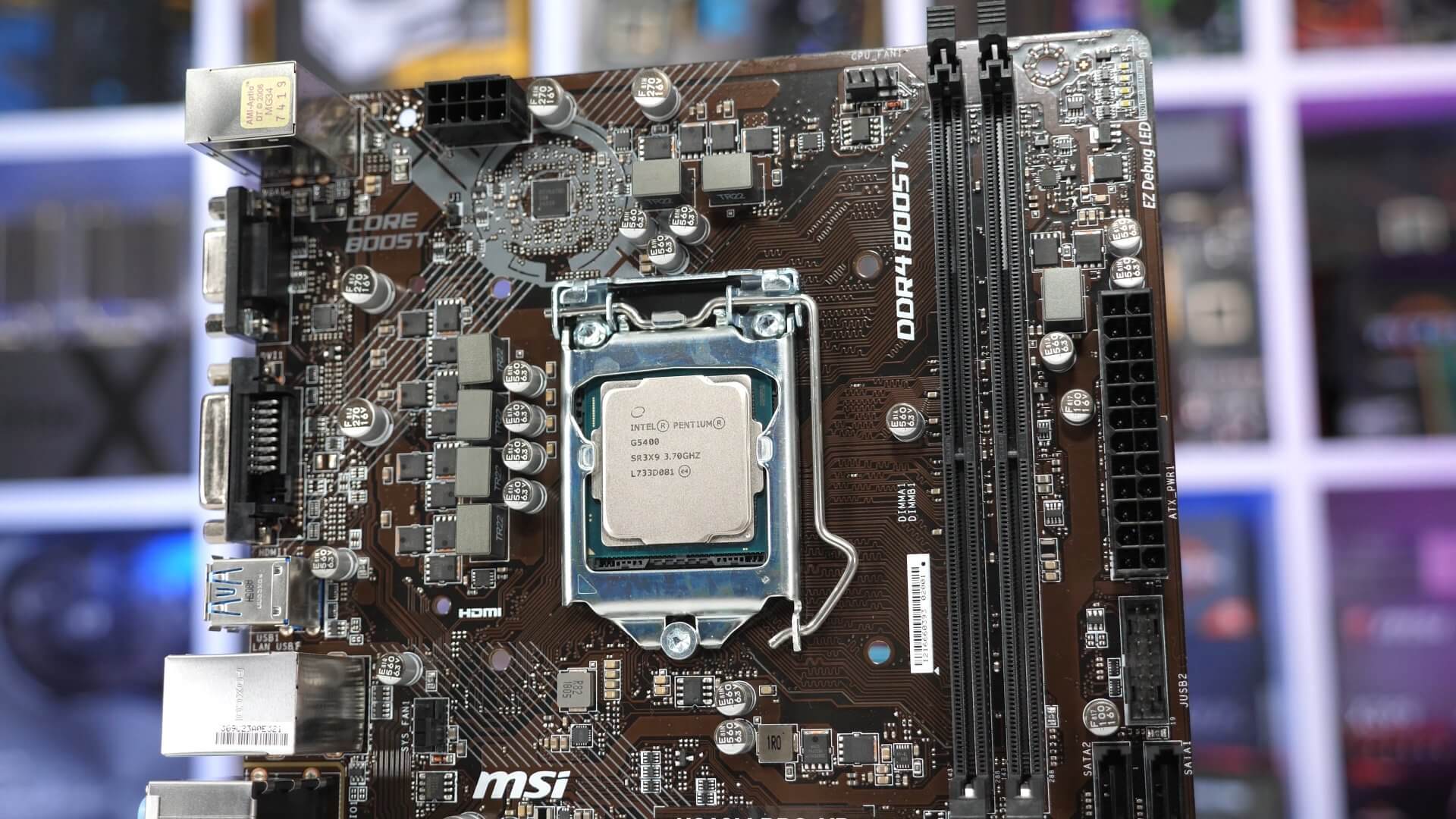
If you're a gamer using a discrete graphics card, should you save every last dollar and go with the 200GE? Perhaps then upgrade to something better in the future, something like the Ryzen 5 2600, or should you spend a little more now and land the 2200G? It's only $40 more, but will you see much of a performance increase? Well, let's find out.
The Athlon 200GE has been tested with dual-channel DDR4-2666 CL16 memory, the Pentium G5400 with dual-channel DDR4-2400 CL16 memory and the Ryzen 3 2200G with DDR4-3200 CL16 memory. Just quickly, for those unaware the reason for the different memory speeds comes down to what the CPUs support.
The 200GE can only run DDR4 memory up to the 2666 spec while the Pentium processor is limited to 2400 memory on locked motherboards such as the H370 for example. The Ryzen 3 2200G doesn't have a memory limit, at least not one that's imposed by anything other than the capabilities of the memory controller itself. Typically they work just fine with 3200 memory and we're recommending using at least 3000 spec memory with this APU.

We're using the RTX 2080 Ti for this test and yes, we know it's an unrealistic GPU, but I want to be able to directly compare the data with the higher end CPUs that I've already tested and frankly it makes no difference. Of course the entire point of testing and comparing these CPUs is to test CPU performance, not low end GPU performance, if you understand this and are happy with that let's continue...
Benchmarks
First up we have Assassin's Creed Odyssey and being the CPU demanding title that it is we find some extremely CPU bound results with these entry-level CPUs. Because of this the 1080p, 1440p and 4K results are all identical, so let's just discuss the 1080p numbers.

The Pentium G5400 was clearly much faster than the Athlon 200GE as it allowed for 18% more performance and at these sub 60 fps frame rates that's a very big and noticeable difference. However, the 2200G was 20% faster again allowing for an average of 48 fps and that was again a very big and very noticeable performance improvement. The 2200G was also 41% faster than the 200GE, so in my opinion it's certainly well worth spending the extra $40 to get the real quad-core CPU.
Moving on Assassin's Creed Origins provides us with rather different margins, here the 2200G offers significantly better performance than the dual-core processors, 55% more performance than the 200GE and at least 40% more than the G5400, though the margin did extend up to 55% at the 4K resolution.

The dual-core SMT enabled 200GE and G5400 really struggle with this title and are only just able to deliver playable performance. The 2200G's performance really was worlds better as frame rates were knocking on the door of 60 fps.
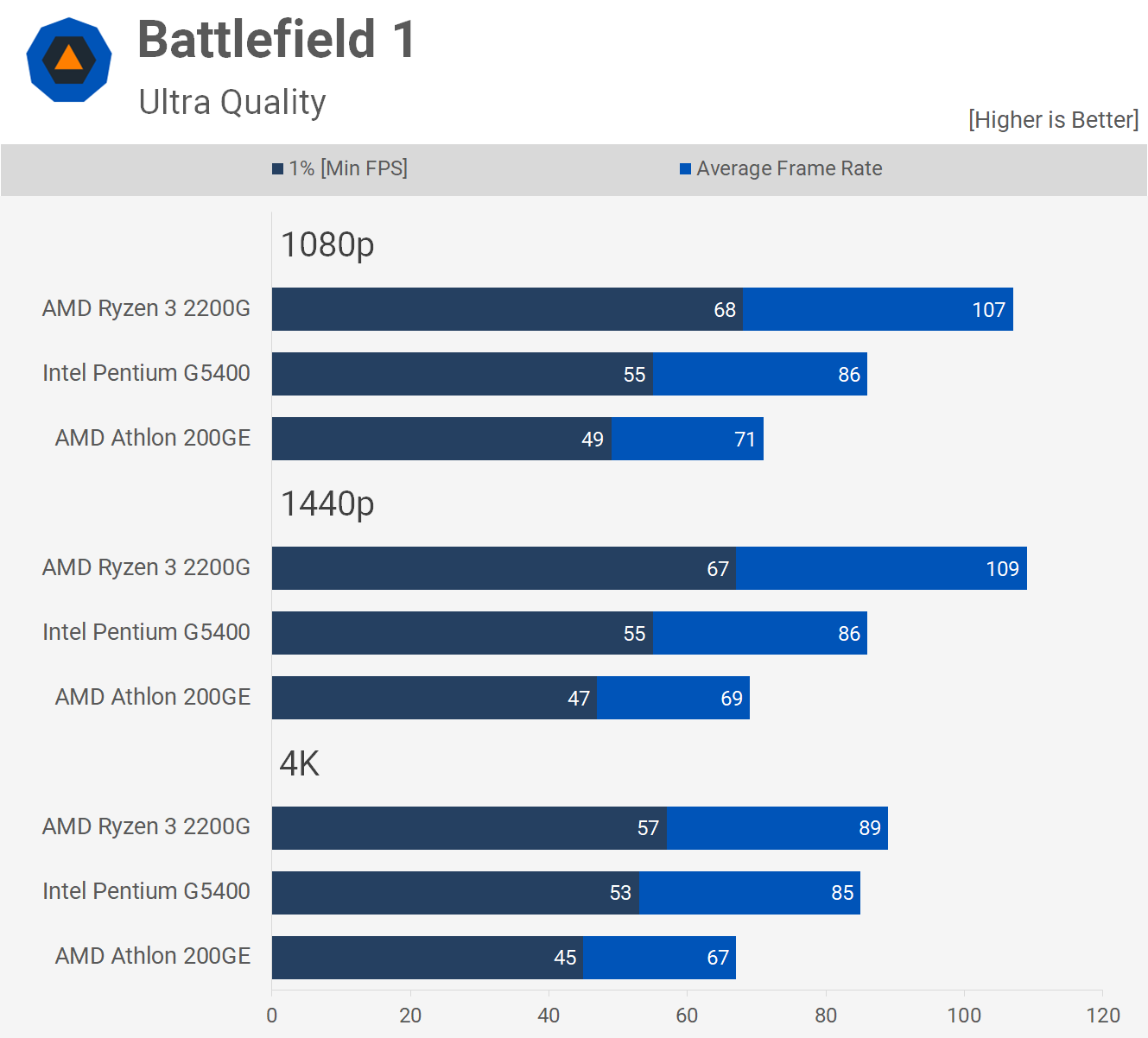
Next up we have Battlefield 1 and here the 2200G was 51% faster than the 200GE at 1080p and 24% faster than the Pentium G5400. Those margins were also seen at 1440p and then reduced quite heavily at 4K as we start to become GPU bound with the 2200G.
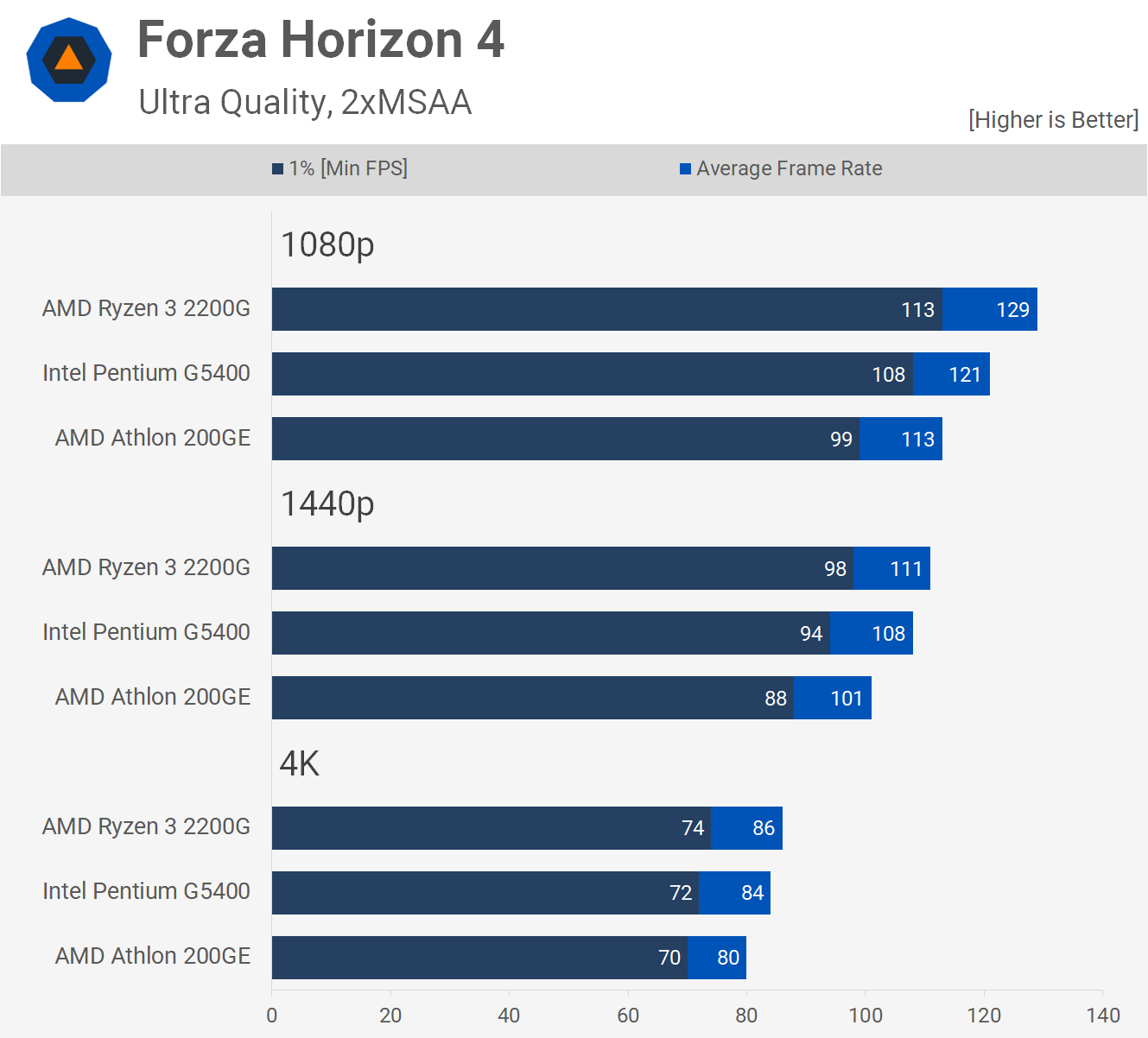
Forza Horizon 4 isn't a CPU intensive game and as you can see even the Athlon 200GE enables a great gaming experience in this title. The Pentium G5400 was a little faster and then the 2200G a little faster again but overall a similar experience with all three CPUs.

The often NPC heavy Hitman is a CPU intensive title and here we see the Athlon 200GE really struggling and basically failing this test as it often dipped below 30 fps. The Pentium G5400 was better but even then we did see regular dips below 30 fps. In order to keep frame rates above 30 fps you will require the 2200G, so for this title that CPUs not really optional, it's a must have item over the 200GE and G5400.
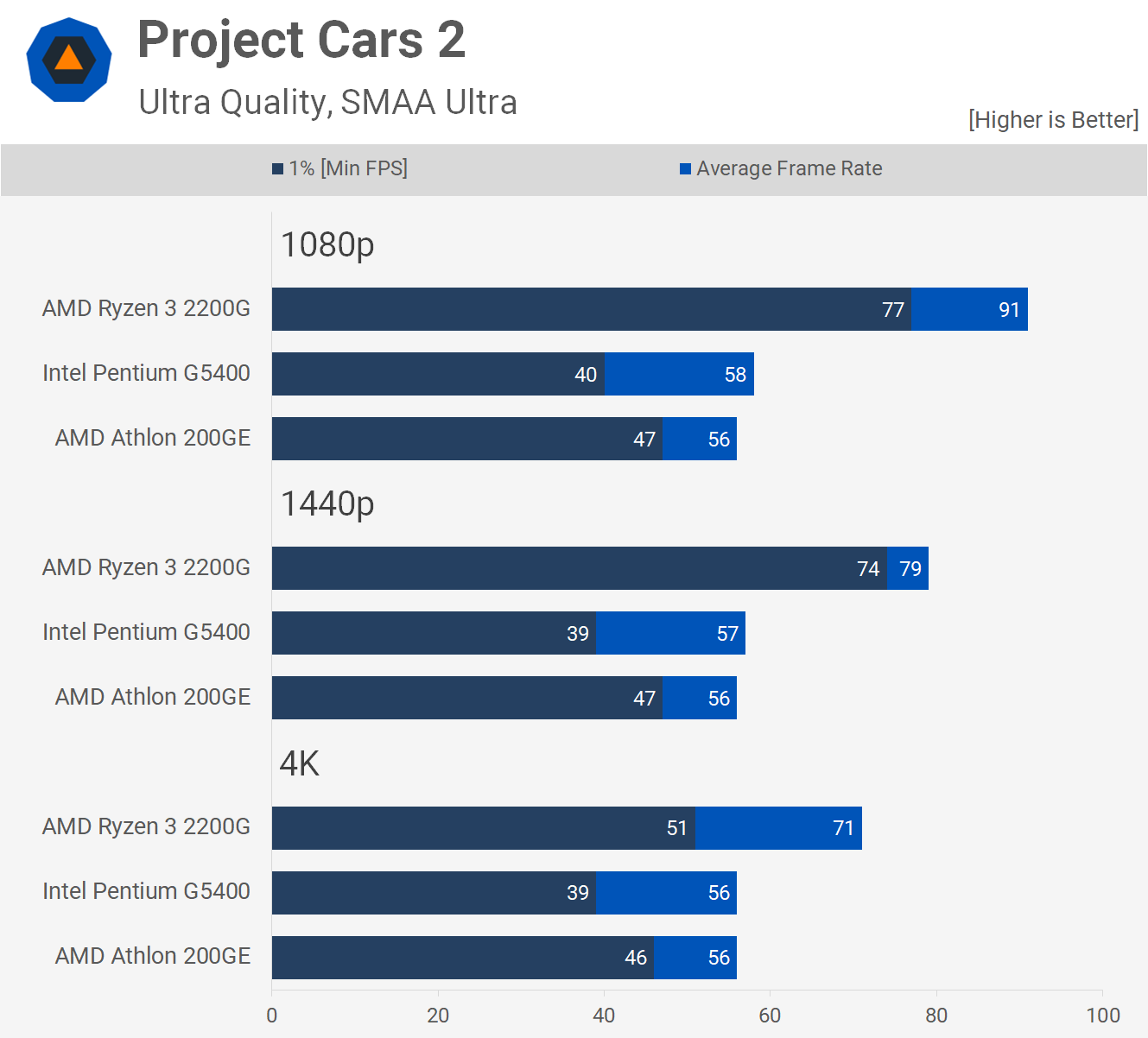
Moving on we have Project Cars 2 and here the Pentium G5400 really struggles with its frame time performance. Average frame rate performance is comparable to the 200GE, with both just shy of 60 fps. The game was playable but as we've found a number of times already, the 2200G offers a significant performance boost.

Rainbow Six Siege ideally requires a true quad-core processor, though having said that the Athlon 200GE does enable highly playable performance in our test. Still at 1080p the 2200G was 41% faster while the G5400 was 17% faster. The margin does close up a little at 1440p and then we see it completely neutralized at 4K.

Second last game test is Star Wars Battlefront II and here we see some pretty weak performance from the Athlon 200GE. At 1080p the G5400 was 33% faster and the 2200G 67% faster. That said frame time performance of the dual-core G5400 and 200GE was comparable, the 2200G was at least 51% faster.

Finally we have Shadow of the Tomb Raider and here the dual-core 200GE and G5400 tanked in a big way, neither were able to deliver playable performance in our test. This is clearly not a dual-core friendly title and we will no doubt see many more of these moving forward. The game ran reasonably well on the 2200G but was basically broken on the dual-cores.
Putting It All Together
Starting with the Athlon 200GE and Pentium G5400 comparison, let's pretend the G5400 is selling at or near the $64 MSRP, rather than the current $110 asking price. That would mean the 200GE and G5400 cost roughly the same amount of money. Which should you buy?
Those planning on using a discrete GPU will for the most part be best served by the Pentium G5400 as it was on average 16% faster at 1080p. We did see scenarios where the Intel CPU was up to 30% faster on average, that said for the most part we did see comparable frame time performance.

There are still reasons why you might pick the Athlon 200GE over the G5400, assuming they were the same price, you'd obviously go with the AMD processor in today's market as it's almost half the price. But even if they both sold for around $60 you might still go for the 200GE as it packs significantly better integrated graphics though you won't use that with a discrete graphics card.
You might be lured by the superior platform on AMD's side, too. Entry-level B350 and B450 motherboards that can support the Ryzen 7 2700X without issue cost $60. Meanwhile you're looking at $70 for an Intel B360 board or $100 for a basic Z370 board, both will likely throttle with a high-end 6 or 8 core Intel processor. Whereas next year B350, B450 or any other AM4 board will support 7nm Zen2, so that's more than a little nice.

At the end of the day for anyone with a big enough budget to include some kind of discrete graphics card I wouldn't even bother with the Athlon 200GE. It's a great general computing type product, excellent for a web browsing system for the parents, but that's about it. We imagine almost everyone reading this will be worlds better off spending $40 more to get the Ryzen 3 2200G, it's just so much more capable there's no reason to even consider the 200GE.
Something I didn't touch on but we have covered numerous times in the past is the overclocking potential of the 2200G, there is more free performance to be had. It really is the best value entry level CPU available right now and spending less than $100 on something else isn't saving you money.
Shopping Shortcuts:
- AMD Ryzen 3 2200G on Amazon, Newegg
- AMD Ryzen 5 2600 on Amazon, Newegg
- AMD Athlon 200GE on Amazon, Newegg
- Ryzen combo: B350 motherboard / MSI B350 Mortar & DDR4-3200 RAM
- Intel Pentium Gold G5400 on Amazon, Newegg
- Pentium combo: MSI H310M Pro-VD & 8GB DDR4-2400 RAM
